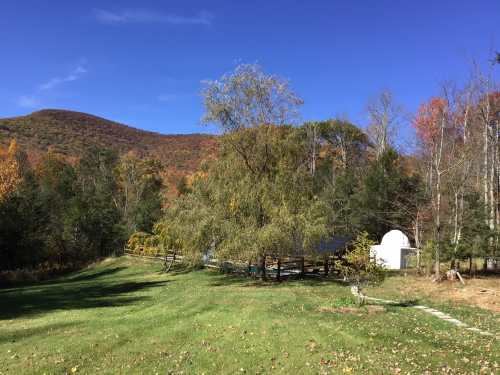I’m familiar with the drooling-craving syndrome. For me, it started with airplanes. During my three post-college years in Asia, some of my Peace Corps friends discovered cheap lessons at government-run flight schools. Count me in! In 1985, I finished my training in the U.S., but what do you do after you’ve obtained a pilot’s license? Everyone’s biggest aspiration is to own a plane.
It seemed a pipe dream for this writer, married to a kindergarten teacher. But, it turned out, good used four-seaters are not crazy expensive, and the next three decades were peppered with fairy-tale aerial adventures.
The parallels to our astronomy passion are obvious. A private observatory may seem impossibly opulent and utterly unworkable for urbanites. Nonetheless, many stubbornly harbor the dream of owning one.
As someone who has traveled that road and managed to make every possible mistake in the process, let me share some hard-won lessons.
First is the issue of “where?” You might think a city would be out of the question. But I watched a physician in light-polluted Kingston, New York, construct a dome on his Victorian rooftop. And, as Dudley Observatory in the Albany, New York, metro area and Matt Francis’ Prescott Observatory south of that city in Arizona show, an imperfect sky is no reason to forgo such a project.
True, this eliminates most deep-space objects. However, the endless realm of double stars, as well as Moon and planet explorations, can keep you and your visitors enthralled forever. Those crowd-pleasers are immune to light pollution.

Our exclusive Sky Guide 2020 is now available! This free downloadable pamphlet contains a month-by-month rundown of 2020’s biggest celestial events, from Mars’ best opposition in years to the return of totality in South America this December. Check out Astronomy’s Sky Guide 2020 now!
Of course, when galaxies and nebulae are important, you must have a dark site. If, like me, you already live far out in the boonies, your home environment might be perfect. Otherwise, if you can commute, buy some land in the middle of nowhere, where real estate is inexpensive. Solar panels and battery storage can preclude the need to spend a fortune erecting poles to connect to the grid. Don’t close until you’ve spent a night camping there. If one sky-direction must be blocked, sacrifice the north.
Next decision: type and size. I built a big roll-off roof observatory in the mid-’80s. No one helped me, and I made major mistakes. I put the roof on swiveling casters. Don’t do that. I had to jack it up and replace everything. I also thought the roof’s wheels would roll on the wooden wall tops. Wrong again. When parked, the heavily loaded casters created depressions and wouldn’t readily climb out of them. I jacked everything up again and topped the walls with thin steel plates. It was harder than it sounds.
I also learned that everything needs to be periodically greased. And that a reversible half-horsepower DC motor was best for moving the enormous weight. And to use chains, not cables. Also, the 12-by-20-foot (3.7 by 6 meters) building was excessive. Do yourself a favor and go smaller.
Then, last year, having moved to even darker skies and now significantly less poor, I gladly paid Explora-Dome to install an 8-foot (2.4 m) motorized dome on their square building. Everything all together — the dome, building, and labor — totaled under $10K. Another few thousand covered the masonry foundation and pier, and the end result was my big f/6 equatorial reflector in one observatory (the roll-off) and apochromatic refractor in the dome.
Shuttling back and forth from a dome to a roll-off provides a great A/B comparison. Yes, a dome looks cool. But a roll-off exposes the entire sky, letting occupants stargaze or use binoculars while waiting their turn at the scope. You can’t do that in a dome.
The bottom line is: Don’t ever abandon your observatory dream.
I’ve skipped the part about how snakes like to nest in them.










